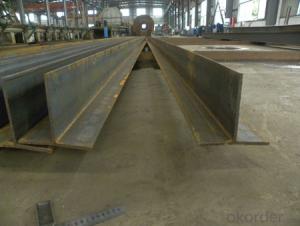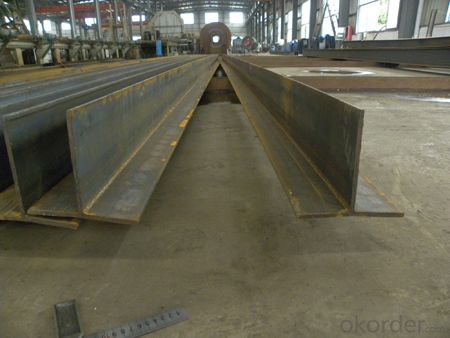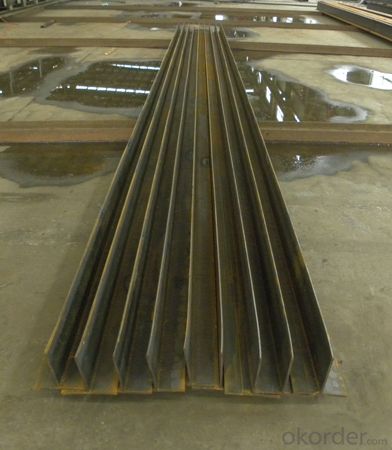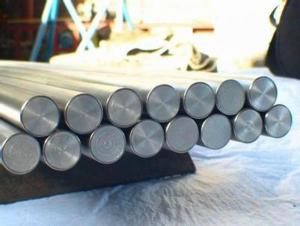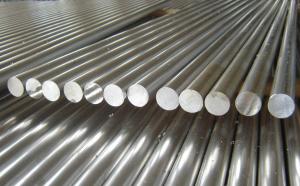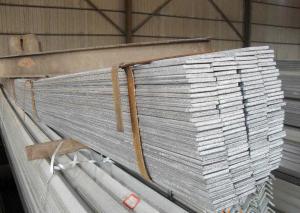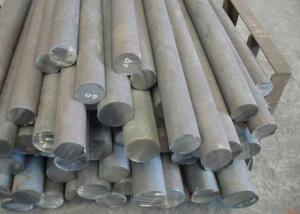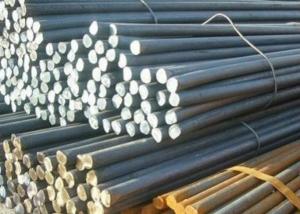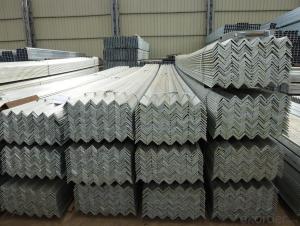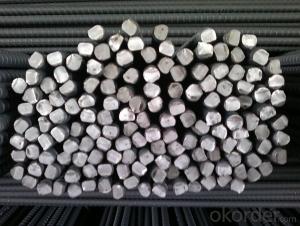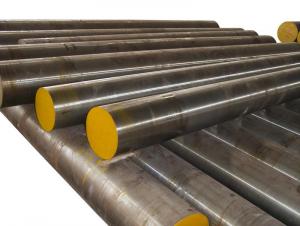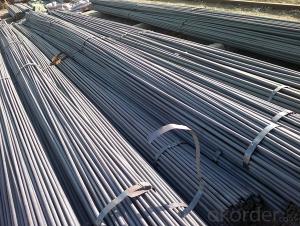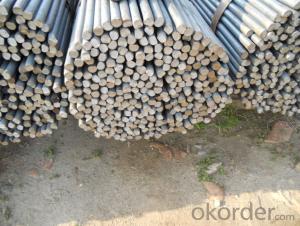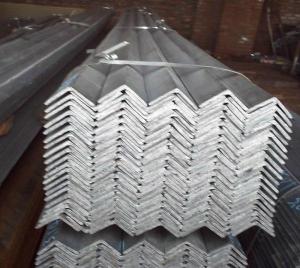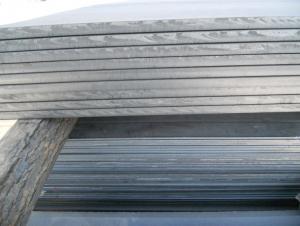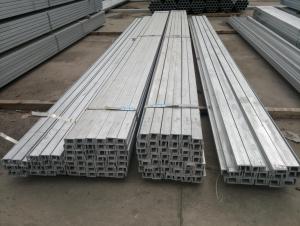Hot Rolled Steel Welded T Form Bar GB Standard for Constructin
- Loading Port:
- China main port
- Payment Terms:
- TT or LC
- Min Order Qty:
- 25 m.t.
- Supply Capability:
- 10000 m.t./month
OKorder Service Pledge
OKorder Financial Service
You Might Also Like
1. Structure of Hot Rolled Steel Welded T Form Bar GB Standard Description:
Hot rolled steel welded T form bar GB standard is a beam with an I-shaped cross-section. The horizontal elements of the "I" are known as flanges, while the vertical element is termed the "web". Hot rolled steel welded T form bar GB standard is usually made of structural steel and is used in construction and civil engineering. The hot rolled steel welded T form bar GB standard resists shear forces, while the flanges resist most of the bending moment experienced by the beam. Hot rolled steel welded T form bar GB standard theory shows that the I-shaped section is a very efficient form for carrying both bending and shears loads in the plane of the web.
2. Main Features of Hot Rolled Steel Welded T Form Bar GB Standard:
• Grade: Q235
• Type: Mild carbon steel
• Deflection: The stiffness of the I-beam will be chosen to minimize deformation
• Vibration: The stiffness and mass are chosen to prevent unacceptable vibrations, particularly in settings sensitive to vibrations, such as offices and libraries.
• Local yield: Caused by concentrated loads, such as at the beam's point of support.
3. Hot Rolled Steel Welded T Form Bar GB Standard Images:
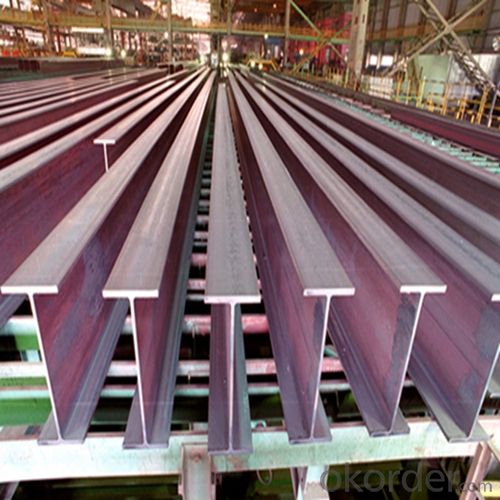
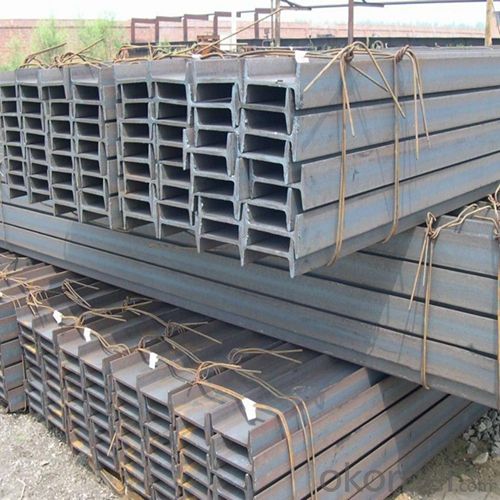

4. Hot Rolled Steel Welded T Form Bar GB Standard Specification:
Alloy No | Grade | Element(%) | ||||
C
| Mn
| S
| P
| Si
| ||
Q235
|
B
|
0.12—0.20 |
0.3—0.7 |
≤0.045 |
≤0.045
|
≤0.3
|
Alloy No | Grade | Yielding strength point(Mpa) | Tensile strength (Mpa) | Elongation after fracture(%) | ||||||
Thickness (mm) | Thickness (mm) | |||||||||
≤16 | >16--40 | >40--60 | >60--100 | ≤16 | >16--40 | >40--60 | >60--100 | |||
≥ | ≥ | |||||||||
Q235 |
B |
235 |
225 |
215 |
205 |
375--500 |
26 |
25 |
24 |
23 |
5. FAQ
We have organized several common questions for our clients,may help you sincerely:
①Is this product same as W beam?
In the United States, the most commonly mentioned I-beam is the wide-flange (W) shape. These beams have flanges in which the planes are nearly parallel. Other I-beams include American Standard (designated S) shapes, in which flange surfaces are not parallel, and H-piles (designated HP), which are typically used as pile foundations. Wide-flange shapes are available in grade ASTM A992,[4] which has generally replaced the older ASTM grades A572 and A36.
②How to inspect the quality?
We have a professional inspection group which belongs to our company. We resolutely put an end to unqualified products flowing into the market. At the same time, we will provide necessary follow-up service assurance.
③Is there any advantage about this kind of product?
Steel I beam bar IPE has a reduced capacity in the transverse direction, and is also inefficient in carrying torsion, for which hollow structural sections are often preferred.
- Q: What does "M" mean?
- The former refers to the steel, round steel, flat steel, angle steel, six angle steel; the latter refers to the I-beam, channel steel, steel, steel, steel frame bending etc..
- Q: Does the profile include H?
- In addition, the profiles include: profile steel, including gear ring, horseshoe steel, pole steel, foot plate, shallow channel, small channel steel, T-shaped steel, ball flat steel, send steel, hot-rolled, six angles, etc.. There are also rivets, steel, farm tools, steel, window frames, steel. Cold bending, cold drawn steel and so on.
- Q: What does "BH" mean?
- In accordance with the different smelting quality of steel, steel is divided into ordinary steel and high quality steel. According to the current catalogue of metal products, ordinary steel can be divided into large section steel, medium section steel and small section steel. The section steel can be divided into I-beam, channel steel, angle steel, round steel and so on according to its sectional shape.
- Q: Elastic modulus of section steel
- Generally speaking, the elastic body exerts an external function, and the elasticity experiences the change of the shape (called strain). The general definition of the elastic modulus is that the stress is divided by the strain. When the material is in the elastic deformation stage, its stress and strain should be changed into a positive proportion (that is to say, according to Hooke's law), and the coefficient of proportionality is called the elastic modulus.
- Q: What kind of steel is used in steel columns?
- Compared with other steel piles, steel pipe piles have their own advantages in many aspects, such as long joint welding, single pile bearing capacity, bending rigidity and penetration ability.
- Q: What is special steel?
- Reinforcing bars for reinforced concreteIs a small type steel reinforced concrete. Including hot rolled round steel bar and prestressed concrete with reinforced concrete, thermal cold rolled steel. Steel reinforcement strip. In addition, also known as the other thread steel. Because the steel in rolling surface of rolled thread handle or reinforcement, steel reinforced concrete is in the construction industry reinforced. According to the material yield point and tensile strength, I, II, III and IV grade steel. The steel bars are used directly. The rebar, reinforced concrete to stress by heat treatment after heat treatment of high strength, but does not apply to steel welding and spot welding, reinforced by 40Si2Mn, 48Si2Mn, 45Si2Cr etc. steel after heat treatment is made, nominal diameter 6, 8.2, 10 mm. Cold rolled ribbed bar with Q215, Q235, 24MnTi steel, nominal diameter 4-12 mm. Steel after heat treatment should be rolled into plate, to heat treatment delivery.
- Q: Can the section steel butt joint in the end?
- Shape steel can butt joint, but pay attention to the quality of welding.Because of the lack of groove, it is impossible to use common arc welding. Recommended laser welding (if required for high strength). The quality of welding can be referred to the GB of welding.
- Q: What are the common types of profiled steel?
- Section steel is divided into two types: simple section steel and complex section steel.Simple section steel: steel, wire rod, square steel, flat steel, six angle steel, triangular, elliptical steel, steel arch steel, etc..
- Q: How to distinguish cold formed section steel and hot rolled section steel?
- Hot rolled steel is a kind of steel with various geometrical cross section formed by heating billet. According to the different angles can be divided into flat steel, steel section, steel and I-shaped steel and hot-rolled L steel; steel according to the different section shape, divided into simple and complex section or section section and section three steel cycle:The characteristics of the simple section are the cross section, any point on the periphery as a tangent, generally not cross section, such as round steel, square steel, six angle steel, flat steel, triangular steel, arch steel and elliptical steel.Complex sections include angle steel, I-beam, channel steel, T steel, H steel, Z steel, rail, steel plate pile, window frame steel and other miscellaneous section steel;The periodic section shape and dimension along the length direction of the steel section changing periodically, such as rebar, axle and steel ploughshare.
Send your message to us
Hot Rolled Steel Welded T Form Bar GB Standard for Constructin
- Loading Port:
- China main port
- Payment Terms:
- TT or LC
- Min Order Qty:
- 25 m.t.
- Supply Capability:
- 10000 m.t./month
OKorder Service Pledge
OKorder Financial Service
Similar products
Hot products
Hot Searches
Related keywords
